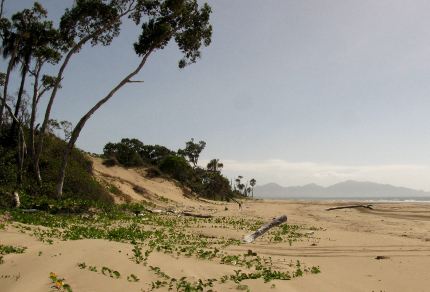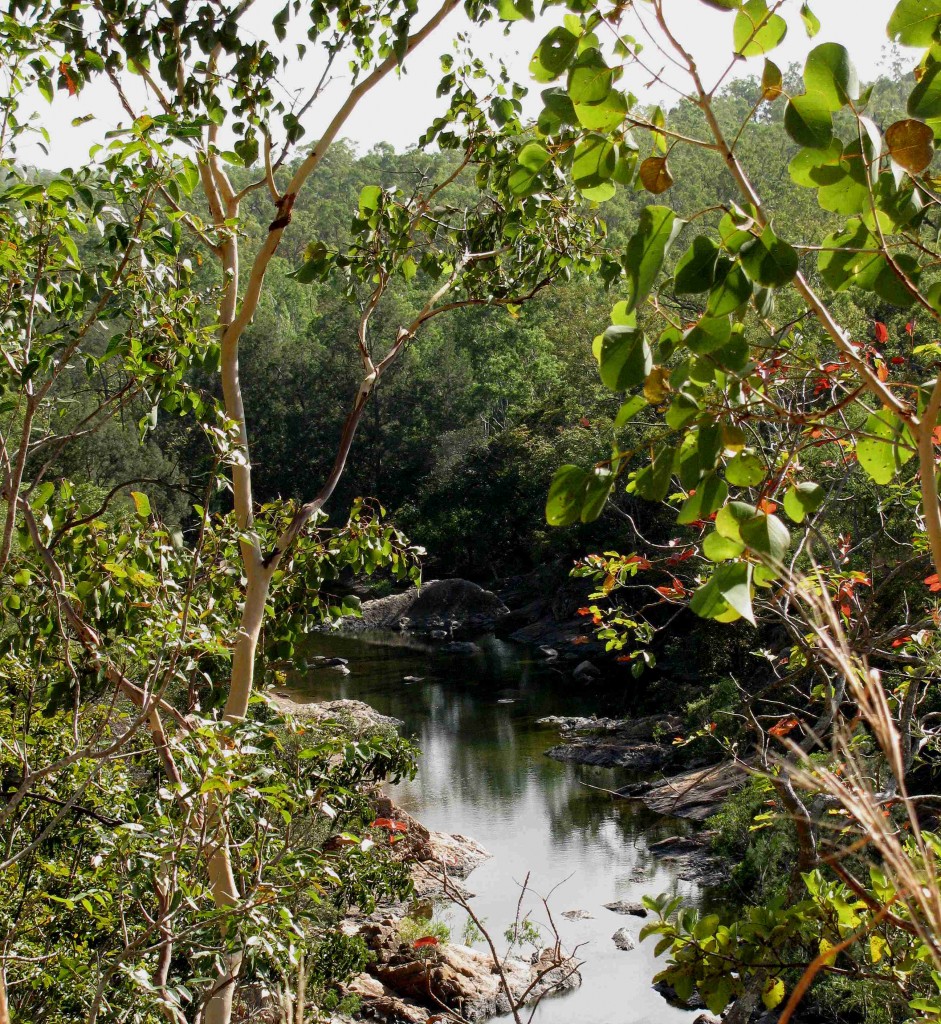
Alligator Creek (© Magi Nams)
Here, there be dragons – small dragons to be sure, but dragons nonetheless. Australia is home to 70 species of dragons, which are lizards belonging to the reptilian family Agamidae.1 Of these, the Townsville area is home to seven,2 and I encountered two of these on my return hike from Cockatoo Creek in the Mount Elliot section of Bowling Green Bay National Park this morning. Although spectacularly fast and sometimes racing across the landscape on their hind legs,1 dragons, like all reptiles, are ectotherms and require an external heat source to warm their bodies and activate their metabolism. The two-lined and Nobbi dragons I came across in mid-morning were soaking up sun on rocks in the trail and moved away from me slowly and then froze into motionlessness, allowing me to photograph them. I attribute my good fortune in sighting the dragons to the fact that nary another soul was bushwalking that track this morning.
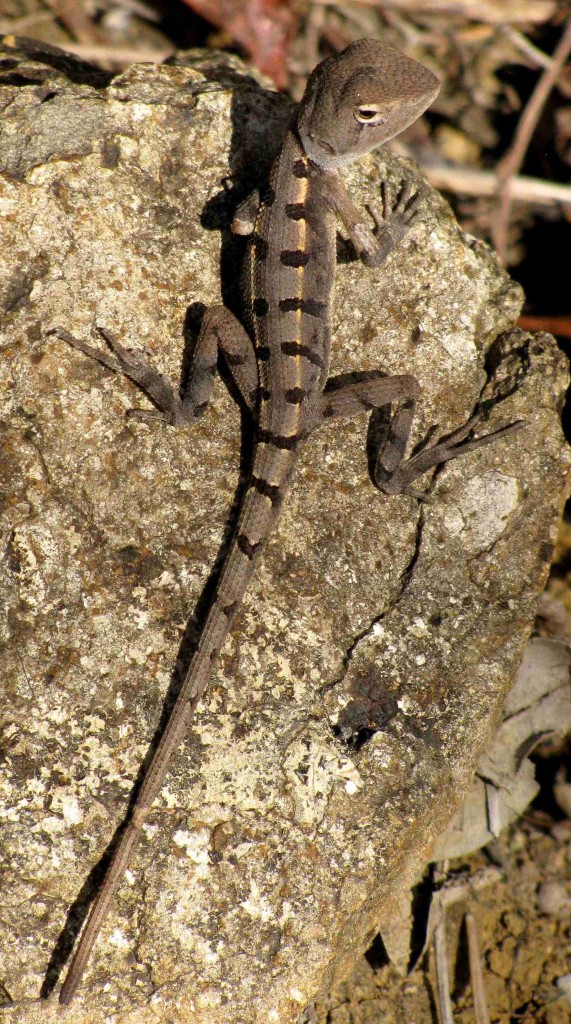
Nobbi Dragon (© Magi Nams)
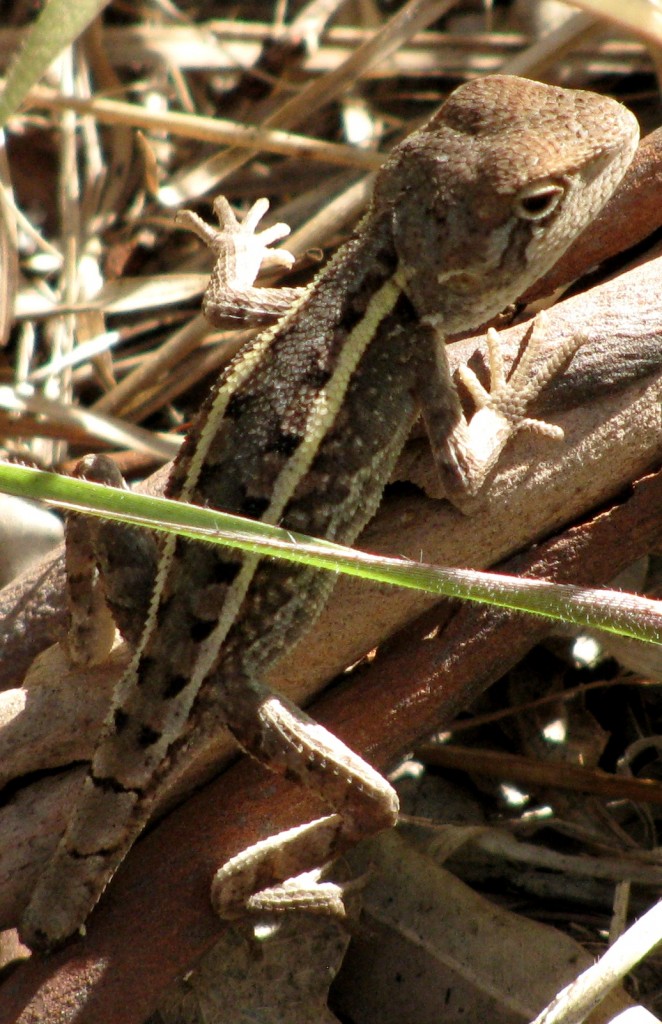
Two-lined Dragon with Missing Tail End (© Magi Nams)
The dragons saved a morning begun with delicious anticipation, but edging on disappointment as I completed my hike without spotting any new birds. I did, however, enjoy a yellow-spotted honeyeater flitting about right in front of my nose in a vine thicket, and a male mistletoebird whose neon red throat and undertail coverts blazed in contrast to the subdued hues of the surrounding open gum woodland. I learned the staccato, descending “tuk-tuk-tuk” call of the white-browed robin and observed an Australian brush-turkey resting atop a huge mound of leaves. Later, I read that brush-turkeys construct huge leaf and soil nest mounds, and that male brush-turkeys maintain a temperature of 35°C in the mounds to incubate eggs.3 Thus, unbeknownst to me, I may have observed a brush-turkey mom laying eggs or a dad doing his paternal duty.

Poplar Gums by Alligator Creek Track (© Magi Nams)
Flocks of finches flew upstream above the creek, and a gentle wind rustled the leaves of poplar gums, reminding me of the sound of wind moving through the leaves of trembling aspens and balsam poplars at home in Canada. With no one else on the trail, I had the wonderful whispering woodlands, as well as the birds and dragons, to myself. All was drier than on my last visit on June 26, when Vilis, Janis, and I bushwalked the 17-kilometre return hike to Alligator Falls. The senescing grasses in the exposed woodland bore tinges of the parched, brownish-grey hue Vilis and I had observed in the woodland understory around Townsville on our arrival in Australia at the end of December, the end of the dry season. In many areas alongside the Alligator Creek track, grasses had been trampled, perhaps by wallabies seeking green shoots.
Leaving the Mount Elliot section of the park, I drove southeast to Cungulla, a small village on the coast with a beach that abutts Bowling Green Bay National Park. I parked the Kia on firm ground above the coastal sand dunes and hiked a soft sand trail that led me through open woodland and over scrub-vegetated dunes to the beach.

Cungulla Beach (© Magi Nams)
Rich green trailing plants and silvery dune grasses stabilized the exposed dune faces and colonized the foreshore. The grasses sent out long rhizomes through and atop the sand, with miniature plants growing from the rhizomes at regular intervals.
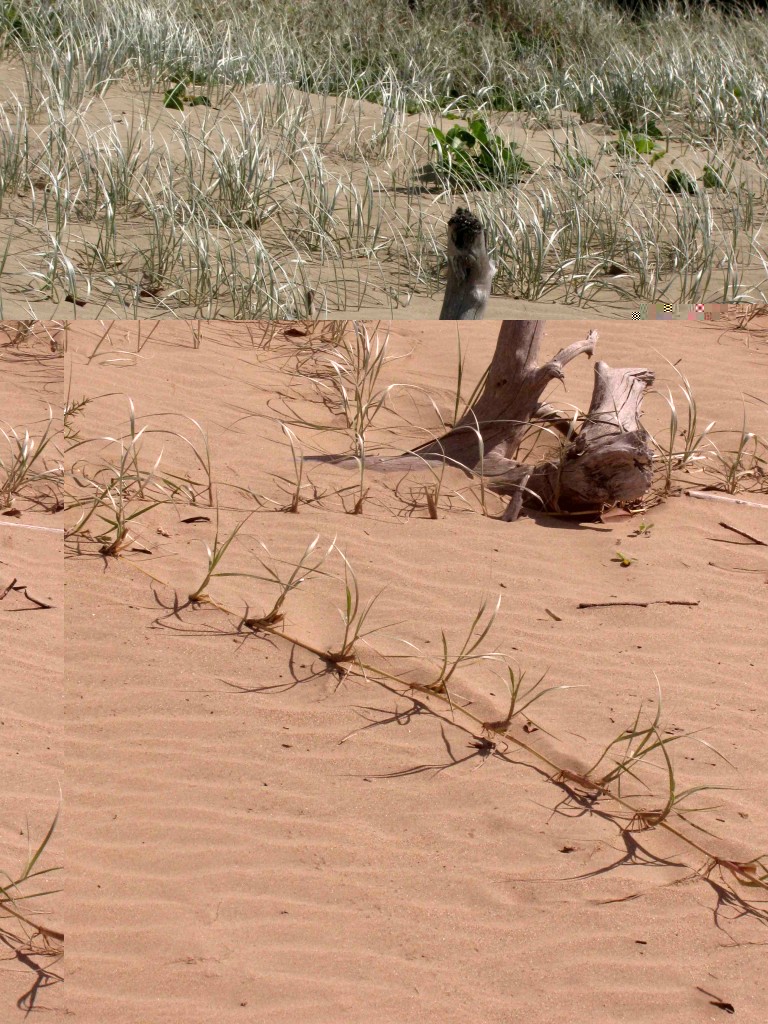
Dune Grasses at Cungulla (© Magi Nams)
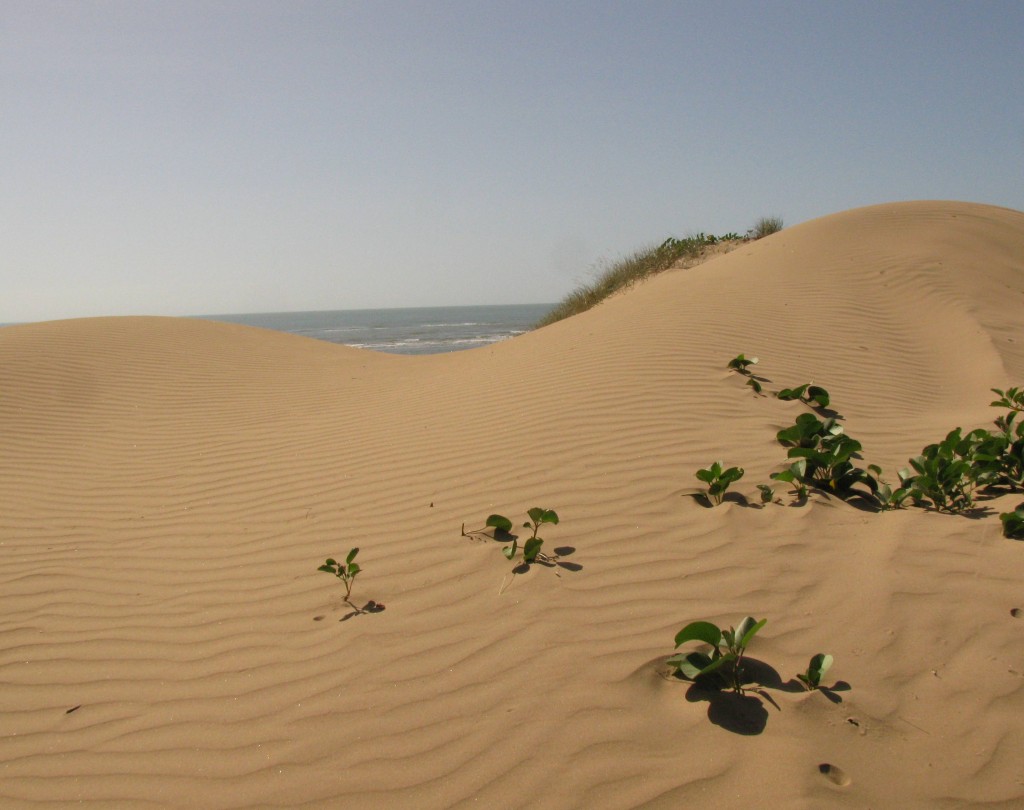
Cungulla Sand Dunes (© Magi Nams)
I walked the beach in the building heat of late morning, pausing to photograph Australian pied oystercatchers and red-capped plovers, the latter skittering in pairs over the bald sand, alerting me to their presence with shrill peeps. Silver gulls hung out near three anglers casting from a point, and an Australian pelican cozied right up to one of the anglers as though expecting a fishy handout.

Red-capped Plover (© Magi Nams)

Cungulla Beach (© Magi Nams)
The beach was striped with the tracks made by quads and 4WD vehicles that had gained access to the shore via the soft sand track I had walked from my car to the beach. This, unfortunately, rendered the beach far more disturbed than I was expecting and perhaps accounted for the low number of avian beach and dune residents I observed. In the end, the sun defeated me – as it often has in Australia – and I retraced my steps, cranked up the air conditioning in the Kia, and headed home to Townsville.
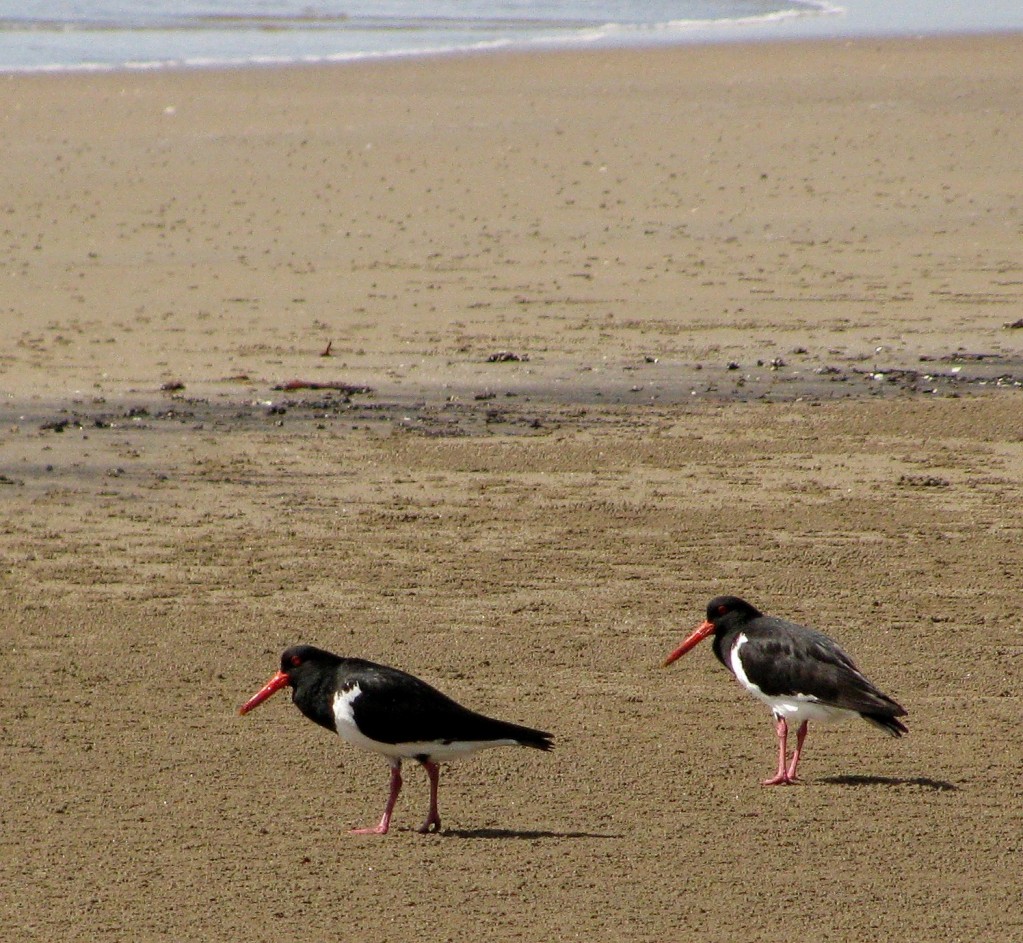
Australian Pied Oystercatchers (© Magi Nams)
Today’s fauna: Alligator Creek – agile wallabies, allied rock wallabies, Australian brush-turkeys, figbirds, leaden flycatchers, dusky honeyeater, grey fantail, white-browed robins, spectacled monarch, mistletoebird, yellow-spotted honeyeater, scaly-breasted lorikeets, white-throated honeyeater, brown-backed honeyeater, rainbow bee-eaters, yellow honeyeater, white-bellied cuckoo-shrike, *two-lined dragons, *Nobbi dragon; Cungulla – Australian pied oystercatchers, silver gulls, *red-capped plovers, whistling kite, rainbow bee-eaters, gull-billed terns; drive – magpie-larks, black kites, straw-necked ibises, galah, pheasant coucal, white-faced heron. (*denotes lifelist sighting)
References:
1. Steve Wilson and Gerry Swan. A Complete Guide to Reptiles of Australia, 2nd edition. 2008. New Holland Publishers (Australia) Pty Ltd, Sydney, p. 318; 2. Ibid, pp. 322, 324, 340, 342, 346, 348.
3. Graham Pizzey and Frank Knight. The Field Guide to the Birds of Australia. 1997. Angus & Robertson, Sydney, p. 20.
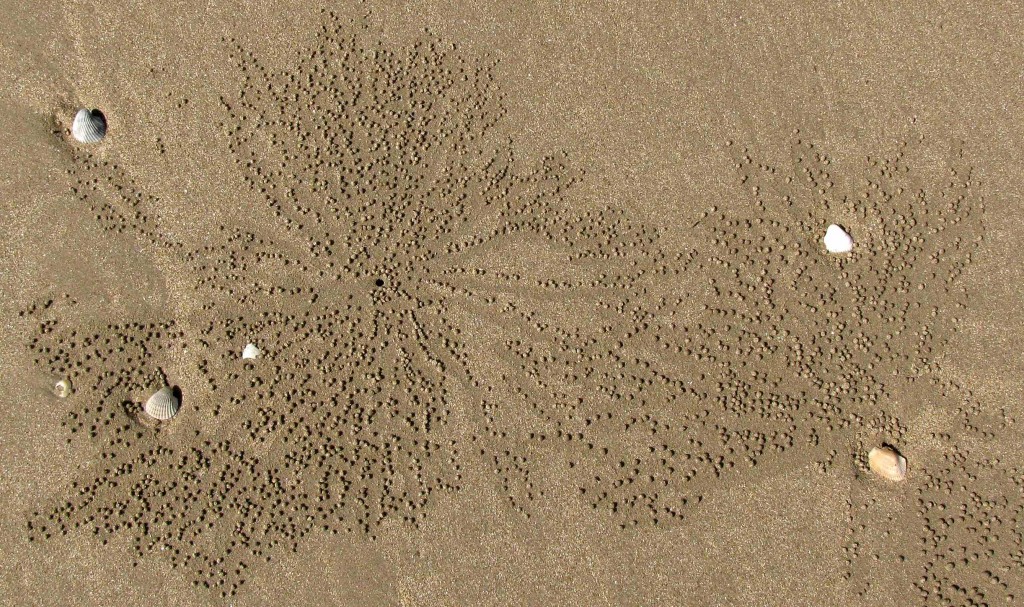
Beach Art (© Magi Nams)

